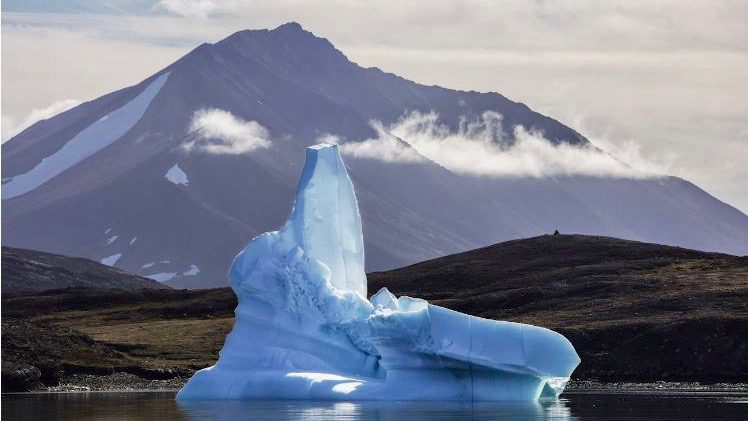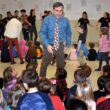As the winter solstice approaches, crystalline stars wink from the dark dome of December nights. The celestial vistas are uplifting, but the news for our own planet is – in the words of a recent U.N. report – bleak.
The carbon dioxide pollution inflaming the Earth is higher than it has ever been, and a new study warns that further atmospheric warming of even 1°C could push us past critical tipping points. We face, in the assessment of more than 11,000 scientists, a “climate emergency.”
I read news of plummeting bird populations, interspersed with reports of the latest wildfires, floods and droughts. I track the wild seesawing of local temperatures, a telltale sign of increasing weather mayhem.
I watch the black-capped chickadees, feeding in our apple tree, and wonder how they will navigate these new extremes – and how the plants and insects that support them will fare.
In this season of darkness, I repeat like an incantation the words of Wendell Berry: “It is the time’s discipline to think of the death of all living, and yet live.”
Poetry and visual arts can help to navigate this paradox, reawakening us when we go numb to the world’s beauty and anguish.
Can art also help move us to climate action where science has failed? Can portraits of peril – that stretch the imagination and tug at the heart – sway those unmoved by data-laden reports?
Rockport photographer Peter Ralston (see accompanying video) says he reaches audiences “primarily in the language we all understand, which is visual.”
In 2016, Ralston had a “front-row seat at one of the most dramatic theaters of climate change on the planet,” traveling by boat to the Arctic along Greenland’s west coast: “My God, when you’re there and you see it, there’s no escaping it,” he reflects. It was “so stark, so concentrated, so in my face, in my lens.”
THROUGH RALSTON’S LENS: Rockport photographer Peter Ralston returned from a trip to the Arctic in 2016 with what he termed an “obligation” to spread the word about the dramatic evidence of climate change he witnessed there. This 3-minute video, produced by Marina Schauffler, captures his reflections on that experience.
Ralston returned from that trip with what he describes as “a burning desire” to share his photos of the dramatic changes underway in the Arctic. Since then, he has given numerous presentations to schools and community groups.
Ralston always leaves audiences with the question Drew Dellinger poses in his poem Hieroglyphic Stairway: “What did you do when the earth was unraveling?”
When two Maine poets, Kathleen Sullivan and Meghan Sterling, confronted that question last winter, they decided to join their voices with others to create an anthology. Just released in November, A Dangerous New World: Maine Voices on the Climate Crisis draws together works by 27 artists and 65 writers (disclosure: including this author).
Sullivan found that the project “made me bolder,” while offering lessons about “how we’re going to get through this” – by joining forces and by balancing grief and anger with love and humor.
As a psychologist with decades of professional experience, Sullivan recognizes the daunting challenge of “managing one’s emotions through all of this.” Knowing that feelings of helplessness can lead to depression, she says, “the most powerful thing we can do as artists is to help others find their voices.”
To extend that effort beyond the anthology, some of its contributors plan to do library readings. Talking about the climate crisis is increasingly critical, notes Bangor psychologist William Hafford, because “often folks don’t have a place to take this conversation, so they struggle with it on their own.”
Hafford has teamed up with photographer and fellow Unity College faculty member Deanna Witman to foster community discussions about grief and loss in the face of ecological disruption. Their library presentations, being offered around the state, fuse artistic imagery with psychological models of how individuals navigate grief.
Art “gives people permission to feel,” Witman says, offering a “gateway to access” the challenging emotions that ecological crises evoke. “Art is unfettered by language,” Hafford adds, so “it can bypass the intellectual veneer.”
Creative expression can become a means of navigating what two Dutch researchers call the “oscillation” between loss (manifesting as grief, denial or avoidance) and restoration (undertaking change).
Their psychological model derives from the study of personal bereavement, like Elizabeth Kubler-Ross’s better-known “grief cycle,” which posits that people move through denial, anger, bargaining and depression before arriving at acceptance.
A singular loss to an individual is markedly different, though, from what we’re confronting in the “sixth mass extinction.” The scope of potential biological and cultural loss taxes our imaginations, threatening to shut down our minds and hearts when they most need to stay open.
The goal of personal healing may be acceptance, but the goal of planetary healing has to be action – rapid and radical transformation. With larger-scale losses, columnist Michelle Goldberg writes, “Acceptance isn’t how you move on… Acceptance itself is a kind of death.”
Art helps us perch on the knife’s edge between denial and despair, clamoring for the change that could save the lives we treasure.




